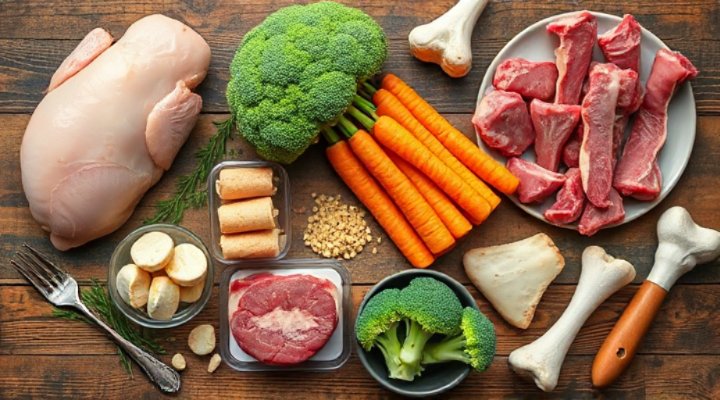Transitioning your dog to a raw food diet might seem daunting at first, but with the right approach, it can be one of the best decisions you make for your furry friend’s health. In this raw dog food diet guide, we’ll walk you through everything you need to know to make the switch safely and effectively.

Why Consider a Raw Dog Food Diet?
Before diving into how to transition, let’s explore why so many pet owners are making the switch to raw feeding. A raw dog food diet closely mimics what dogs would eat in the wild, consisting primarily of raw meat, bones, fruits, and vegetables.
According to the FDA, while there are risks with raw feeding, proper handling and preparation can mitigate these concerns. Many veterinarians and pet nutritionists agree that when done correctly, a raw diet can offer numerous benefits including:
- Improved digestion and smaller stools
- Healthier skin and shinier coat
- Increased energy levels
- Better dental health
- Stronger immune system

Getting Started with Raw Feeding
Now that you understand the benefits, let’s discuss how to begin transitioning your dog to a raw food diet. First and foremost, consult with your veterinarian, especially if your dog has any existing health conditions. Our article on choosing the right dog emphasizes the importance of understanding your pet’s specific needs.
Step 1: Research and Education
Before making any changes to your dog’s diet, educate yourself about raw feeding. The American Veterinary Medical Association provides valuable resources on this topic.
Step 2: Start Slowly
Begin by introducing small amounts of raw food mixed with your dog’s current diet. This gradual approach helps prevent digestive upset. For more on managing dietary transitions, check out our guide on house training older dogs which includes tips on dietary consistency.

Creating a Balanced Raw Diet
A proper raw dog food diet should include:
- Muscle meat (about 70%)
- Raw bones (about 10%)
- Organs (about 10%)
- Vegetables and fruits (about 10%)
Remember, balance over time is more important than perfect balance in every meal. If you’re also interested in training techniques to complement your dog’s new diet, our AKC trick dog training guide offers great mental stimulation ideas.
Common Challenges and Solutions
Transitioning to a raw diet isn’t always smooth sailing. Some dogs may be hesitant at first. Here are some common challenges and how to overcome them:
- Picky Eaters: Try different protein sources or slightly warm the food
- Digestive Upset: Slow down the transition process
- Time Constraints: Consider pre-made raw food options
For dogs with specific behavioral challenges during meal times, our puppy biting solutions article might offer helpful parallel strategies.

Monitoring Your Dog’s Health
After transitioning to a raw food diet, monitor your dog closely for:
- Energy levels
- Coat condition
- Stool quality
- Overall demeanor
Remember that every dog is unique. What works for one might not work for another. For more personalized advice, consider joining a local dog club where you can connect with other raw feeders.
Final Thoughts
Transitioning to a raw dog food diet requires commitment and patience, but the potential health benefits for your canine companion make it worthwhile. Start slow, do your research, and don’t hesitate to seek professional guidance when needed.
Related Keywords: raw feeding for dogs, homemade dog food, natural pet nutrition, BARF diet, canine dietary needs

